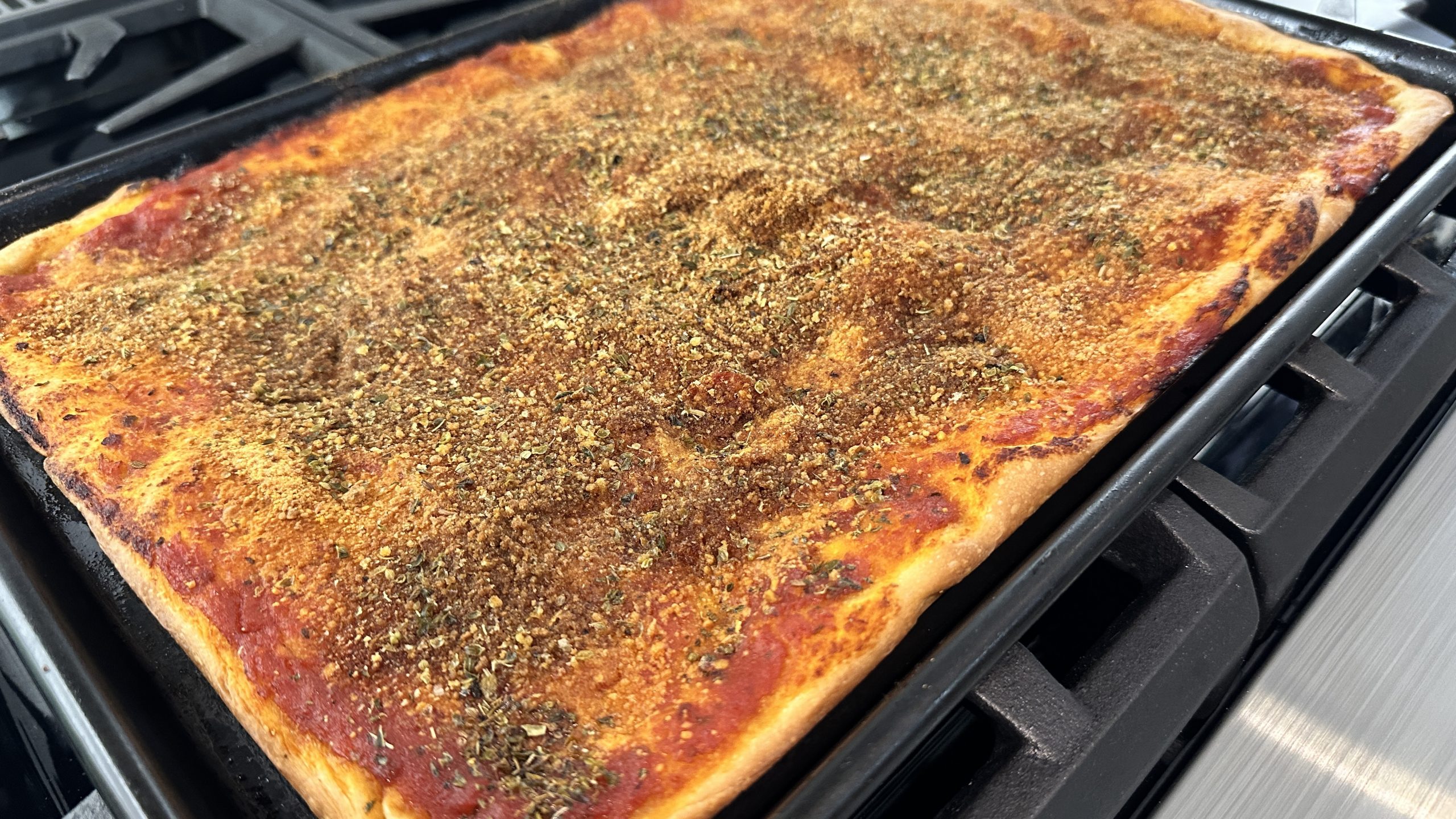
sfincione
If you think pizza means a thin, round, crisp-bottomed crust with neatly arranged toppings, sfincione (pronounced sfeen-cho-nay) is here to shake up your expectations. This is not your typical pizza—it’s thick, spongy, loaded with flavor, and dripping with history. The name itself comes from the Latin spongia, meaning sponge, which is fitting given its airy, focaccia-like texture. But while it shares some DNA with focaccia, sfincione is an entity all its own, thanks to its signature sauce and toppings that make it uniquely Sicilian.
Sfincione traces its roots back centuries, long before the modern pizza we know today took over the streets of Naples. Sicily, with its complex history of Greek, Arab, Norman, and Spanish influences, has always been a place of culinary fusion, and sfincione is no exception. Legend has it that this hearty, sauce-laden creation originated in Palermo, specifically in the kitchens of monasteries, where nuns baked it for religious feasts. It was a special treat, richer and more flavorful than everyday bread, but still simple and affordable enough for the common people. Unlike Neapolitan pizza, which became an icon of street food, sfincione was traditionally made at home, particularly around Christmastime, when families would gather to bake enormous trays of it to share.
What sets sfincione apart is its unapologetically bold sauce—a slow-cooked blend of tomatoes, onions, olive oil, and sometimes anchovies, creating a deeply savory and slightly sweet flavor. Unlike the fresh tomato-and-basil simplicity of Neapolitan pizza, sfincione’s sauce is more like a jammy, concentrated stew, meant to seep into the soft, porous dough. Speaking of the dough, it’s thicker and softer than most other pizza styles, but never heavy. It bakes up light and airy on the inside, with a crispy, olive oil-kissed crust on the bottom.
The toppings are just as distinctive. Instead of the classic mozzarella that dominates most pizzas, sfincione is typically topped with caciocavallo, a cheese that brings a sharp, tangy bite. If you’ve never had caciocavallo, imagine a firmer, more pungent cousin of provolone. Some versions also include grated pecorino for extra saltiness. Another key ingredient is the breadcrumb topping—yes, breadcrumbs on pizza! Sicilians have a knack for using breadcrumbs as a way to add texture and stretch ingredients further, and here they serve the dual purpose of soaking up all that rich sauce while adding a satisfying crunch.
Sfincione’s appearance might surprise those used to picture-perfect, symmetrical pizzas. It’s often baked in large, rectangular trays and cut into square slices, its surface an uneven, glorious mess of sauce, cheese, and crispy bits. Some versions are even more rustic, with no cheese at all, relying solely on the onions, anchovies, and breadcrumbs for flavor. This is especially true in Bagheria, a small town near Palermo, where locals fiercely defend their cheese-less, extra oniony version of sfincione as the “real” one.
Though sfincione remains a Sicilian specialty, it has made its way beyond the island. Sicilian immigrants carried their pizza traditions with them to the United States, where sfincione became the blueprint for what we now call Sicilian-style pizza—a thicker, rectangular pie that’s popular in pizzerias from New York to Detroit. But there’s a key difference: American Sicilian pizza usually has mozzarella and a more standard tomato sauce, whereas authentic sfincione stays true to its roots with its onion-laden, breadcrumb-topped goodness.
In Sicily, you don’t have to look far to find sfincione. Bakeries, street vendors, and old-school panifici (bread shops) sell it fresh from the oven, its scent wafting through the air, luring hungry passersby. It’s often sold in squares, wrapped in brown paper, and eaten on the go. In Palermo, you’ll even find sfincionari, street vendors who peddle their wares from three-wheeled carts, calling out “Scarsu di carni, ma chinu di sustanza!” which roughly translates to, “Low on meat, but full of substance!”—a proud nod to the pizza’s humble, meat-free but flavor-packed nature.
Sfincione is more than just a regional variation of pizza—it’s a slice of Sicilian history, a reflection of the island’s resourcefulness, and a testament to how a few simple ingredients can create something utterly delicious. Whether you’re lucky enough to try it in a bustling Sicilian market or decide to bake it at home, one thing is certain: sfincione is a pizza that tells a story, one crunchy, saucy, cheesy bite at a time.